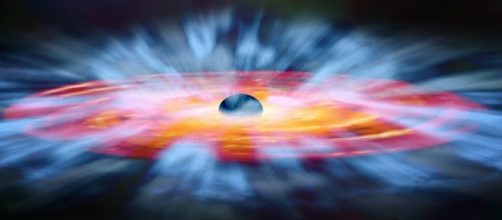NASA has designated a space mission that will permit scientists to study, in detail, the mysteries of some of the most powerful objects in the universe-black holes, neutron stars and pulsars. The mission includes three space telescopes equipped with high resolution cameras capable of capturing the polarization of the X-rays radiating from black holes. The mission will allow scientists to understand about the extreme cosmic environments where very energetic magnetic and electric fields exist.
Extreme astronomical objects
Black holes (BH) form when a massive star collapses under its own gravity.
This objects are so compacted that the gravitational field is so strong that not even light can scape to it. BH can heat surrounding gases to millions of degrees, emitting great amounts of X-ray radiation, which can be detected by telescopes. Binary systems of stars consisting of neutron stars often emit X-rays when the companion star is stripped off of its mass by the gravitational force of the Neutron Star. If enough mass is accreted y the neutron star it will collapse into a black hole.
Neutron star
A neutron star is the collapsed core of a massive star (10-28) solar masses. These compacted stars have a radius of approximately 10 km, although they can possess two times the mass of the sun. They´re called neutron stars because they´re composed entirely of neutrons and they´re supported against further collapse by a process known as neutron degeneracy pressure.
If a neutron star grows in density it will continue collapsing forming a black hole.
NASA´s Explorers Program
The object of this program is to provide scientific investigations of space utilizing up to date technology within the areas of heliophysics and astrophysics. It seeks to improve public´s appreciation of space and to integrate educational activities of science investigations. The program has launched nearly 90 missions, including the Explorer 1 and the Cosmic Background Explorer Mission.
Although scientists can´t directly detect the processes developing near black holes or neutron stars, the observation of the polarization of X-rays in these environments will allow them to understand better the physics of black holes and neutron stars. The mission is scheduled to launch in 2020.

